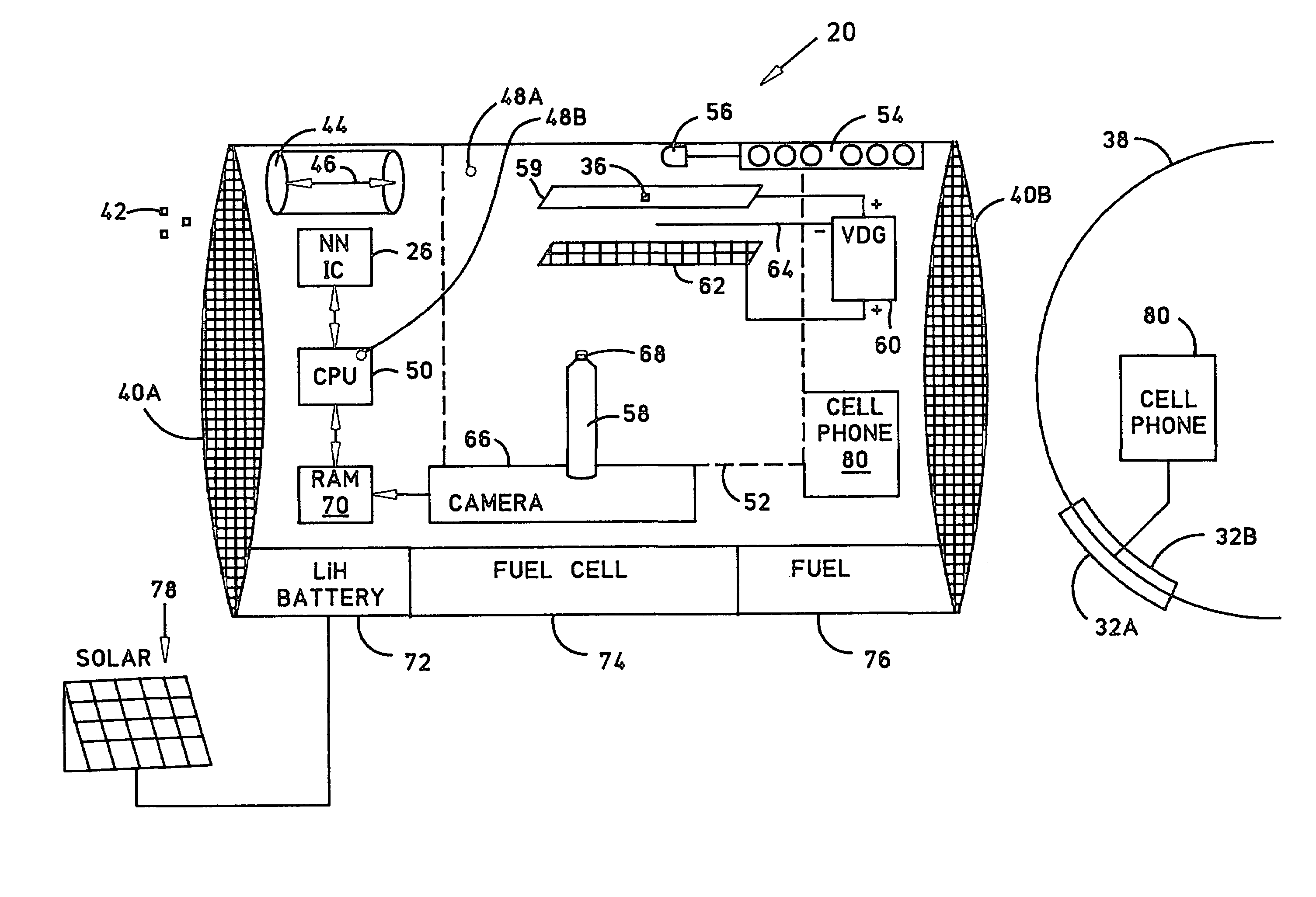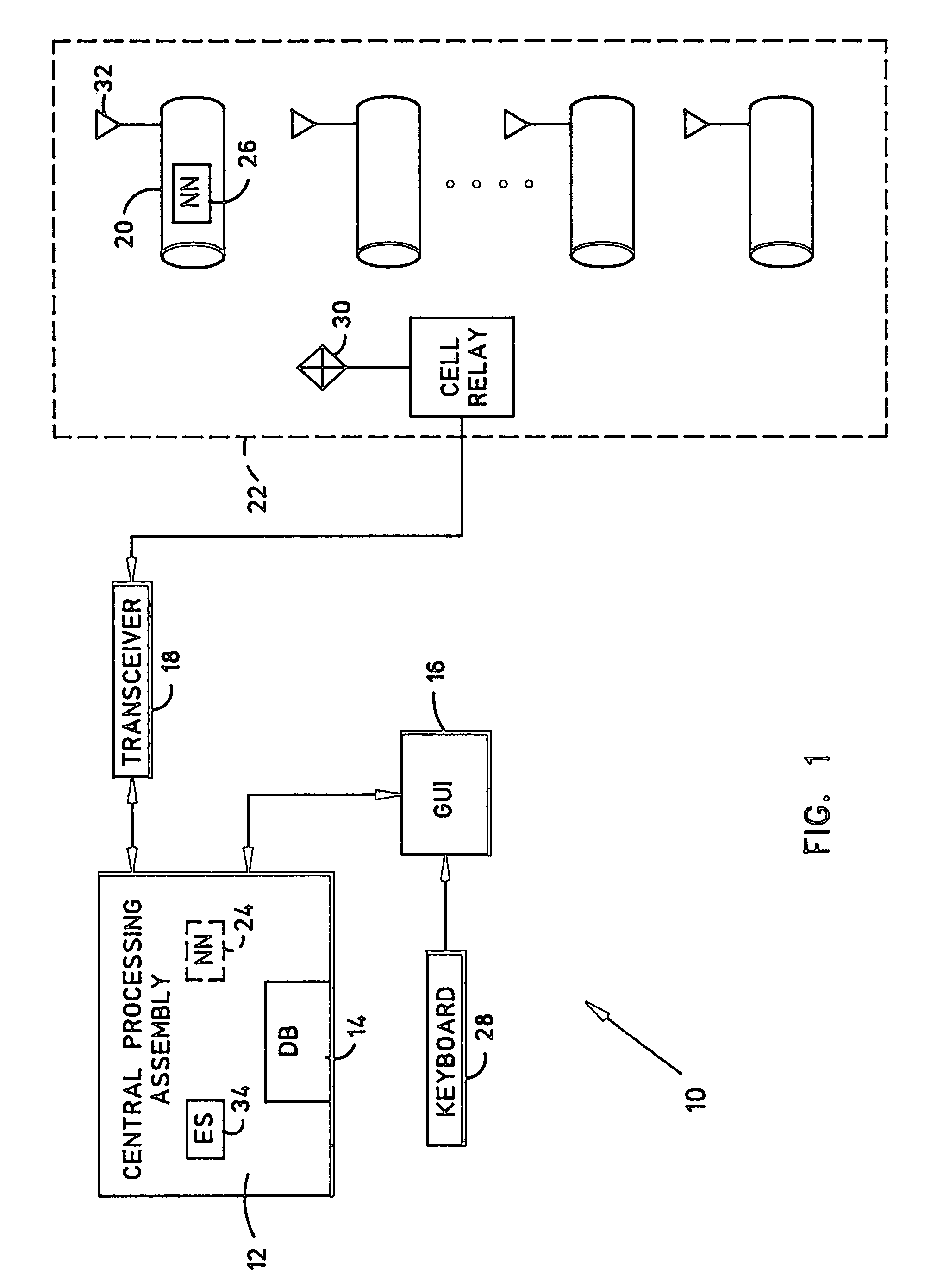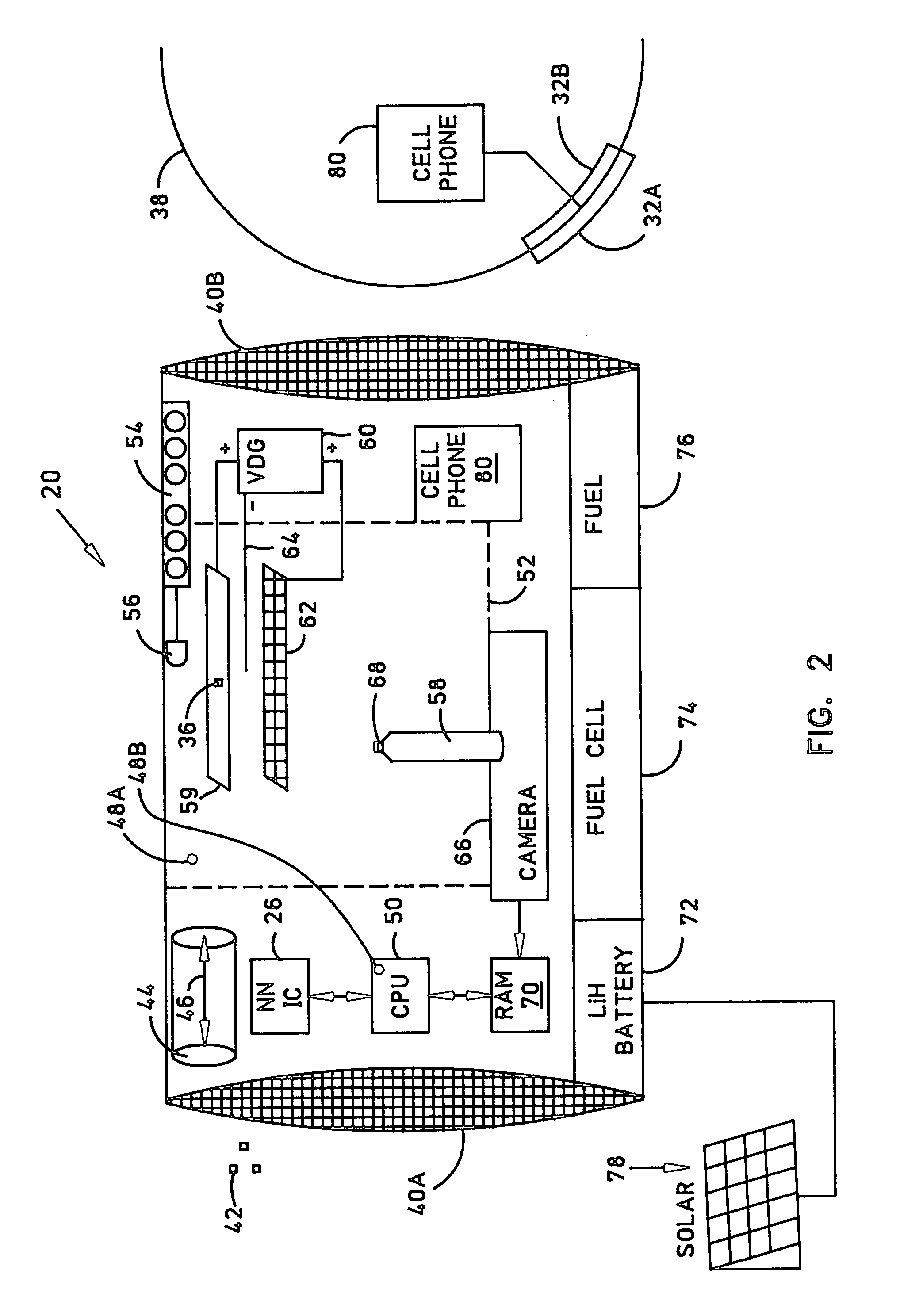Distributed biohazard surveillance system and apparatus for adaptive collection and particulate sampling
a biohazard and distributed technology, applied in the field of biohazard surveillance systems, can solve the problems of increasing the inherent hazards of infectious microorganisms to humans, plants and animals, and the increase of the risk of human, plant and animal life from infectious microorganisms
- Summary
- Abstract
- Description
- Claims
- Application Information
AI Technical Summary
Benefits of technology
Problems solved by technology
Method used
Image
Examples
Embodiment Construction
[0031]FIG. 1 is a schematic diagram illustrating an exemplary embodiment of the distributed biological hazard surveillance system 10 of this invention. System 10 includes a central processing assembly 12 including a database 14 coupled to a graphical user interface (GUI) 16 and a transceiver system 18 for communicating with a plurality of detector assemblies, exemplified by the detector assembly 20, that are disposed throughout a physical region 22 under surveillance, which may encompass, for example, a battlefield or a municipality or a portion thereof. Database 14 may include, for example, data representing a plurality of neural network weights for use in a local neural network facility 24 resident in assembly 14 or, alternatively, data representing a plurality of neural network weights adapted for downloading to one or more neural networks exemplified by the neural network integrated circuit (IC) 26 in assembly 20. Such data transfer may be initiated by a user at the keyboard 28 ...
PUM
 Login to View More
Login to View More Abstract
Description
Claims
Application Information
 Login to View More
Login to View More - R&D
- Intellectual Property
- Life Sciences
- Materials
- Tech Scout
- Unparalleled Data Quality
- Higher Quality Content
- 60% Fewer Hallucinations
Browse by: Latest US Patents, China's latest patents, Technical Efficacy Thesaurus, Application Domain, Technology Topic, Popular Technical Reports.
© 2025 PatSnap. All rights reserved.Legal|Privacy policy|Modern Slavery Act Transparency Statement|Sitemap|About US| Contact US: help@patsnap.com



